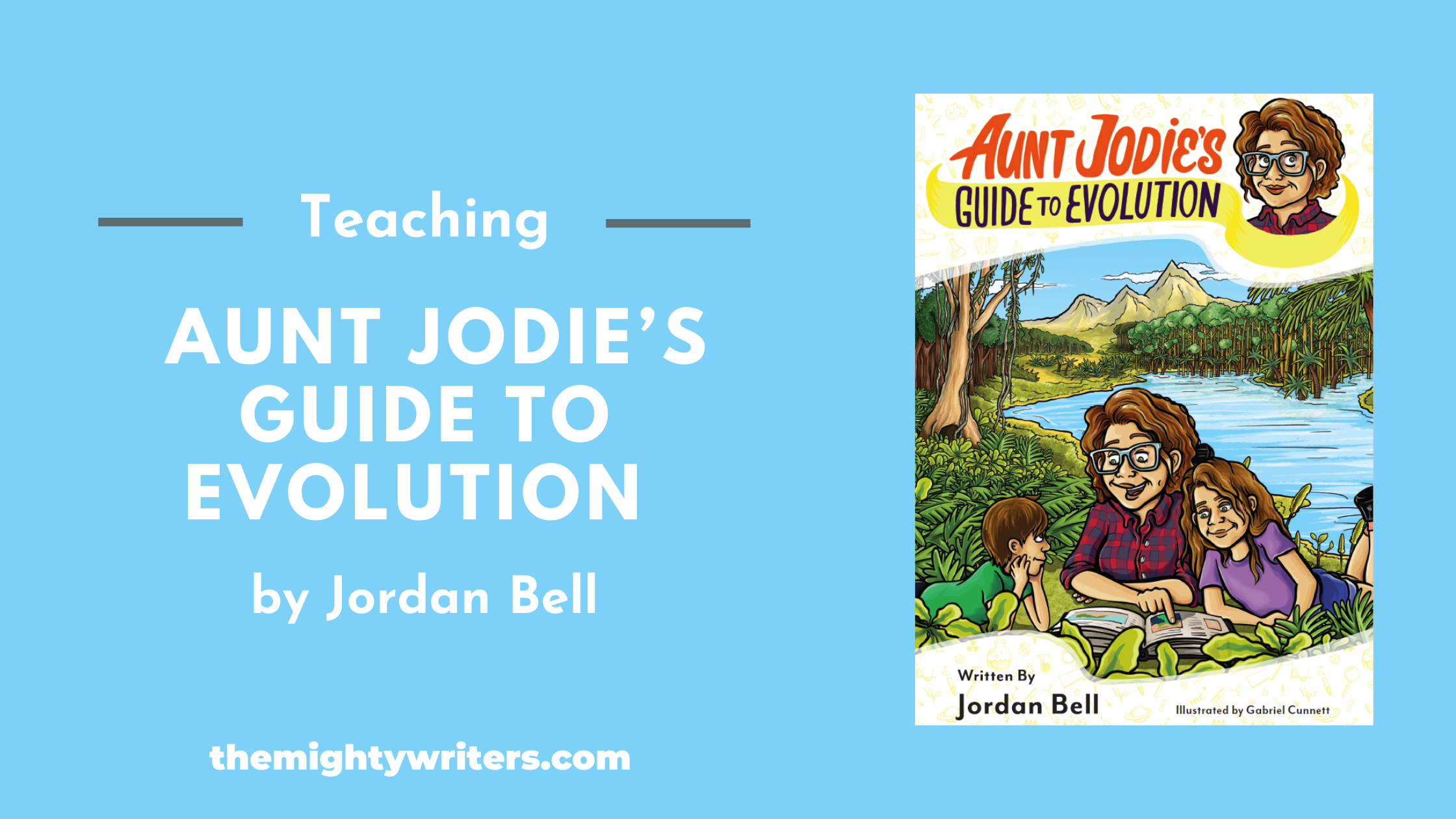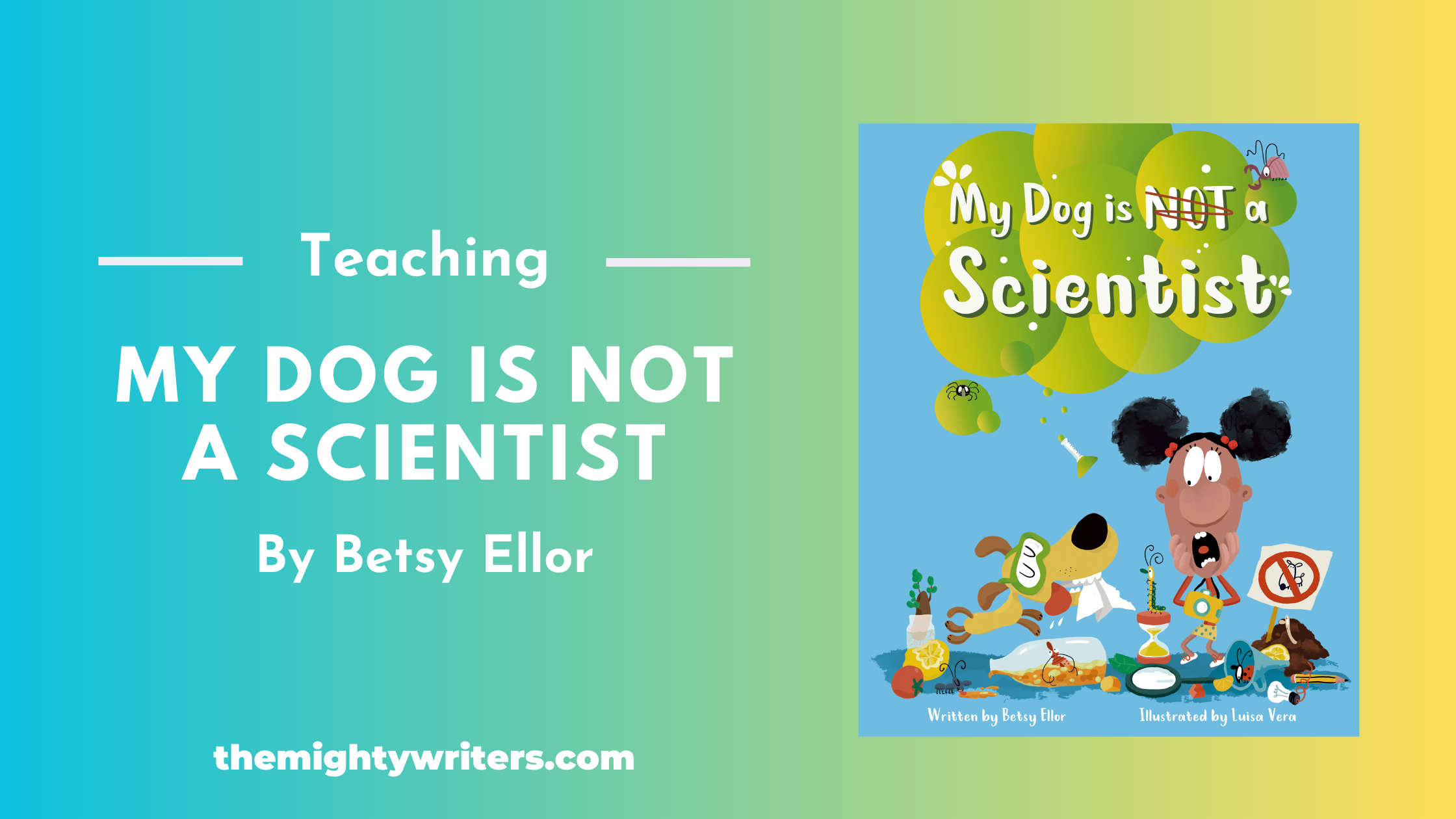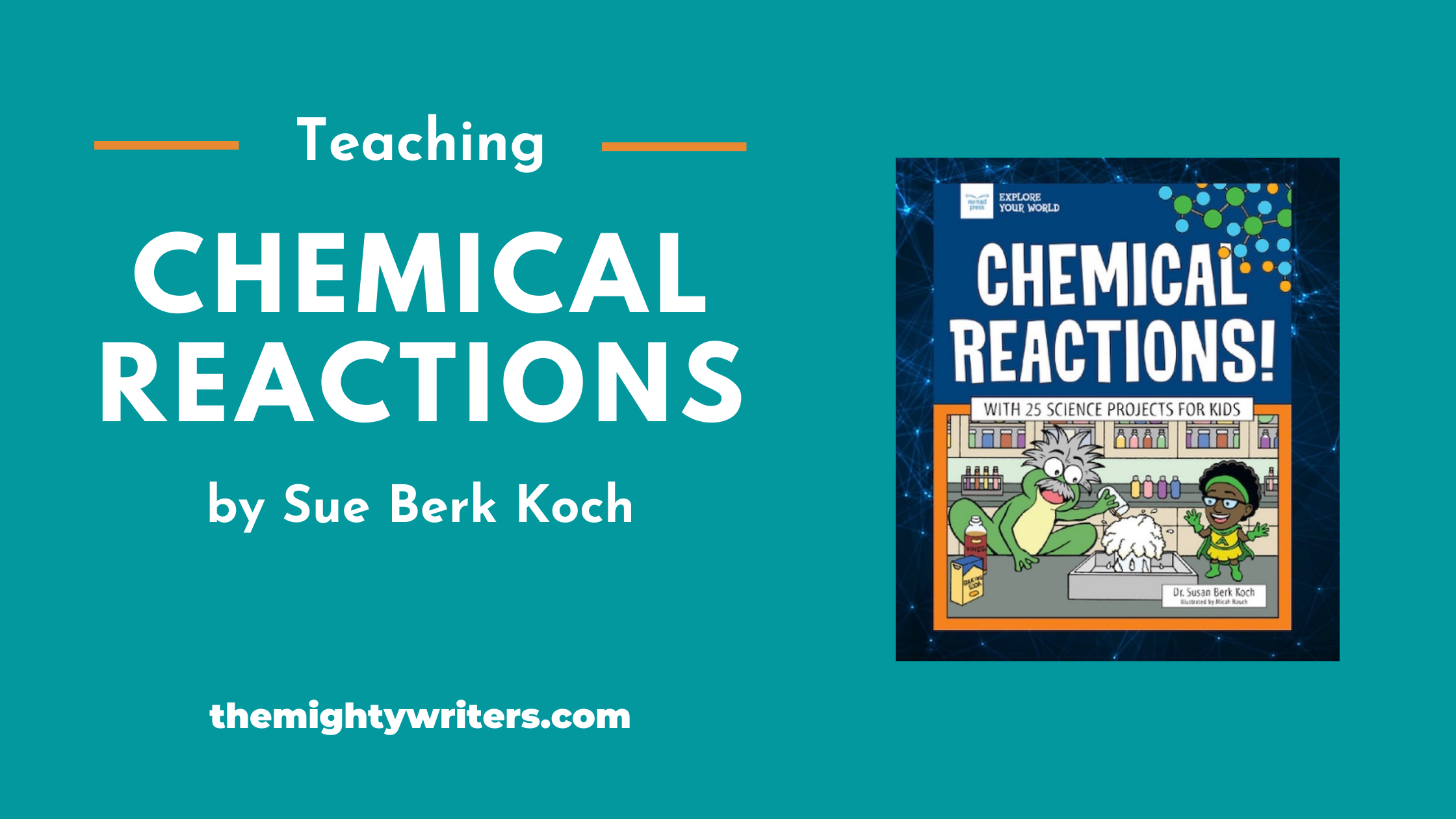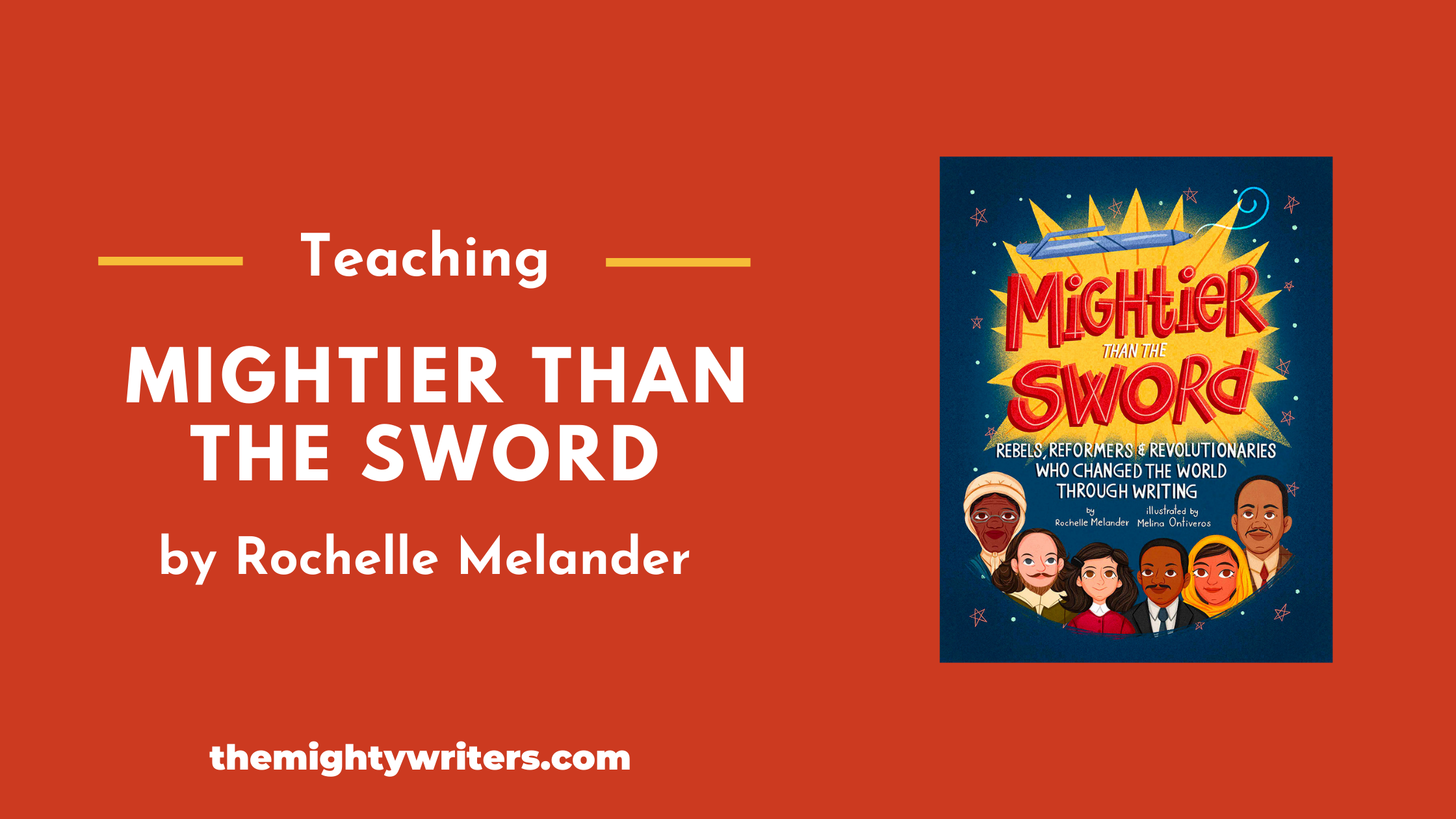A Note to Readers
When I wrote MIGHTIER THAN THE SWORD, I was excited to learn about Charles Darwin and his amazing discoveries. Jordan Bell puts Darwin’s findings into fiction, helping young people understand the concepts of evolution. If this is something you cover with your students, you won’t want to miss this post!
Enjoy!
Rochelle
Teaching Aunt Jodie’s Guide to Evolution
Tell us about your book.
Aunt Jodie’s Guide to Evolution introduces the concept of Darwinian evolution in a richly-illustrated, informational fiction format suitable for students 8-13 years. Aunt Jodie explains grown-up science to kids through her conversations with her niece and nephew, Matt and Sophie. The three travel through imagination back in time to review the science of evolution in two different settings. I also included a glossary of terms and pronunciation guide in the back of the book, so that kids learn how to say the new scientific terms they discover in Aunt Jodie’s Guide.

What do you hope your young readers will take away from your book?
I believe a working knowledge of key scientific concepts, such as evolution, is going to be profoundly important for this generation as they face their future. Widespread scientific literacy is so important for a modern society. I wanted to help kids build a scientific worldview from an early age, and evolution felt like a significant standalone issue that would inform the way that readers looked at the world, so this is where I’ve started. Future books in the Aunt Jodie’s Guide series will cover Climate Change, the Solar System, and the Human Body.
How might a teacher or librarian use your book in the classroom?
Aunt Jodie’s Guide to Evolution aligns with the Next Generation Science Standards (NGSS) (2013), for the study of Life Sciences in elementary schools and middle schools, per the table below.
| Curriculum area | Topics |
| Elementary school Life Sciences |
· Understanding that some characteristics of organisms are inherited from the parents, and some are the result of interactions with the environment; examples of inherited versus acquired/learned traits
· How physical features and behaviors help living things survive in their environments; understanding that when the environment changes, some organisms survive, while others die or move to a different location · Relationships in communities and ecosystems (e.g., simple food chains, predator-prey relationships); effects of changes in ecosystems (e.g., overpopulation, lack of food sources) |
| Middle school Life Sciences |
· Reproduction (sexual and asexual) and heredity (the role of genes in the expression and passing on of traits from one generation to another)
· Diversity, adaptation, and natural selection (the role of genetic variation and adaptation in the survival and extinction of species in changing environments) · The fossil record and comparative anatomy as evidence for changes in life forms on Earth over geologic time and the basis for the theory of evolution |
From: https://timssandpirls.bc.edu/timss2019/encyclopedia/united-states.html
Aunt Jodie’s Guide to Evolution would also make an excellent extension activity for middle grades science lessons, and a good class activity for the following science-related days in the academic calendar.
Darwin Day (February 12) – commemorates the anniversary of Charles Darwin’s birth (12 February 1809).
Women’s History Month (March) – celebrate women in STEM by reading a book about female scientist
Citizen Science Day (mid-April) – celebrate using science to understand everyday life
Citizen Science Month (April)
DNA Day (April 25) – celebrate the building block of evolution
National STEM – STEAM Day (November 8) – celebrate a science-oriented mindset to the world
Evolution Day (November 24) – commemorate the anniversary of the initial publication of On the Origin of Species by Charles Darwin on 24 November 1859
Can you share an exercise or activity that teachers can do with students after they’ve read your book?
- Create a family tree, highlighting inheritance and variation in each person’s family, like Aunt Jodie, Matt and Sophie talk about on page 3.
- Using the glossary at the back of the book to find focus words for spelling or grammar lessons that week.
- A research project or class presentation about Charles Darwin and the theory of evolution
- Use this origami technique (https://www.youtube.com/watch?v=vZZ40_LRVvA) on multiple shades of grey, white, and black paper, to have your class make and decorate one moth each. Prepare a large backing sheet with a gradient from white to light grey to dark grey to black. Arrange the generations of moths similar to those shown on page 41, supporting the children to understand how the change of colour leads to greater safety for darker moths as the tree bark is stained darker with soot.
What books pair well with your book?
The Story of Life: A First Book about Evolution, by Catherine Barr and Steve Williams, is one book that pairs well with Aunt Jodie’s Guide to Evolution, for a perspective on evolution that also includes dinosaurs.
If teachers want to take a closer focus on Charles Darwin, Darwin and Evolution for Kids: His Life and Ideas with 21 Activities, by Kristan Lawson, follows Darwin’s life from childhood to the publication of On The Origin of Species, and also contains activities.
 About the author. Jordan is a psychologist and educator, with a passion for science communication. She has a PhD in Educational Resilience, but is also a nerdy parent who loves reading to her daughter. When she couldn’t find enough children’s fiction with a strong STEM message to help her daughter learn about the world, she wrote Aunt Jodie’s Guide to Evolution. She believes that understanding the theory of evolution is an important key to scientific literacy for our developing citizens. Jordan is currently working on her second book, Aunt Jodie’s Guide to Climate Change. Follow her at www.auntjodiesguide.com or https://www.facebook.com/AuntJodiesGuides/ for more information or for cool science links.
About the author. Jordan is a psychologist and educator, with a passion for science communication. She has a PhD in Educational Resilience, but is also a nerdy parent who loves reading to her daughter. When she couldn’t find enough children’s fiction with a strong STEM message to help her daughter learn about the world, she wrote Aunt Jodie’s Guide to Evolution. She believes that understanding the theory of evolution is an important key to scientific literacy for our developing citizens. Jordan is currently working on her second book, Aunt Jodie’s Guide to Climate Change. Follow her at www.auntjodiesguide.com or https://www.facebook.com/AuntJodiesGuides/ for more information or for cool science links.
Aunt Jodie’s Guide to Evolution is available for purchase at www.gumroad.com/jordanbell





